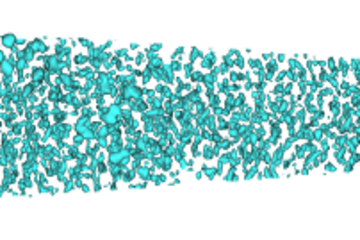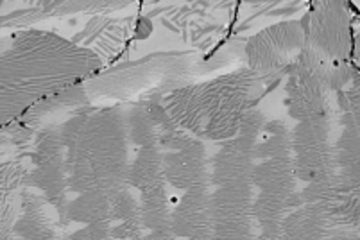All genres
521.
Journal Article
Deformation induced alloying in crystalline – metallic glass nano-composites. Materials Science and Engineering A: Structural Materials Properties Microstructure and Processing 628, pp. 269 - 280 (2015)
522.
Journal Article
Dynamic strain aging studied at the atomic scale. Acta Materialia 86, pp. 34 - 42 (2015)
523.
Journal Article
Multiphase microstructures via confined precipitation and dissolution of vessel phases: Example of austenite in martensitic steel. Acta Materialia 86, pp. 1 - 14 (2015)
524.
Journal Article
Grain boundary segregation engineering and austenite reversion turn embrittlement into toughness: Example of a 9 wt.% medium Mn steel. Acta Materialia 86, pp. 182 - 192 (2015)
525.
Journal Article
Carbon partitioning during quenching and partitioning heat treatment accompanied by carbide precipitation. Acta Materialia 86, pp. 137 - 147 (2015)
526.
Journal Article
Computationally efficient and quantitatively accurate multiscale simulation of solid-solution strengthening by ab initio calculation. Acta Materialia 85, pp. 53 - 66 (2015)
527.
Journal Article
Thermal dissolution mechanisms of AlN/CrN hard coating superlattices studied by atom probe tomography and transmission electron microscopy. Acta Materialia 85, pp. 32 - 41 (2015)
528.
Journal Article
Nanolaminate transformation-induced plasticity-twinning-induced plasticity steel with dynamic strain partitioning and enhanced damage resistance. Acta Materialia 85, pp. 216 - 228 (2015)
529.
Journal Article
Shear-flow-controlled mode selection in a nonlinear autocatalytic medium. Physical Review E 91 (2), 022913 (2015)
530.
Journal Article
Effects of Ru on elemental partitioning and precipitation of topologically close-packed phases in Ni-based superalloys. Scripta Materialia 101, pp. 44 - 47 (2015)
531.
Journal Article
Mechanisms of subgrain coarsening and its effect on the mechanical properties of carbon-supersaturated nanocrystalline hypereutectoid steel. Acta Materialia 84, pp. 110 - 123 (2015)
532.
Journal Article
Segregation of boron at prior austenite grain boundaries in a quenched martensitic steel studied by atom probe tomography. Scripta Materialia 96, pp. 13 - 16 (2015)
533.
Journal Article
Advanced scale bridging microstructure analysis of single crystal Ni-base superalloys. Advanced Engineering Materials 17 (2), pp. 216 - 230 (2015)
534.
Journal Article
Grain Boundary Segregation in Fe–Mn–C Twinning-Induced Plasticity Steels Studied by Correlative Electron Backscatter Diffraction and Atom Probe Tomography. Acta Materialia 83, pp. 37 - 47 (2015)
535.
Journal Article
Linking atomistic, kinetic Monte Carlo and crystal plasticity simulations of single-crystal tungsten strength. GAMM-Mitteilungen 38 (2), pp. 213 - 227 (2015)
536.
Journal Article
On the room temperature deformation mechanisms of a Mg–Y–Zn alloy with long period stacking ordered structures. Acta Materialia 82, pp. 414 - 423 (2015)
537.
Journal Article
Atom probe tomography study of internal interfaces in Cu2ZnSnSe4 thin-films. Journal of Applied Physics 118 (9), 095302 (2015)
538.
Journal Article
Detection of Cu2Zn5SnSe8 and Cu2Zn6SnSe9 phases in co-evaporated Cu2ZnSnSe4 thin-films. Applied Physics Letters 107 (17), 172102 (2015)
539.
Journal Article
A novel roll-bonding methodology for the cross-scale analysis of phase properties and interactions in multiphase structural materials. International Journal of Materials Research 106 (1), pp. 3 - 14 (2015)
540.
Journal Article
The maximum separation cluster analysis algorithm for atom-probe tomography: Parameter determination and accuracy. Microscopy and Microanalysis 20 (6), pp. 1662 - 1671 (2014)











